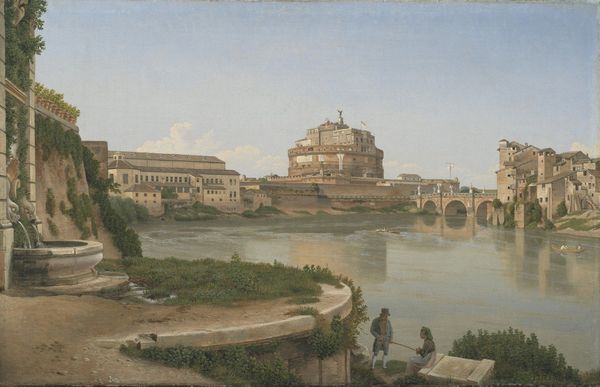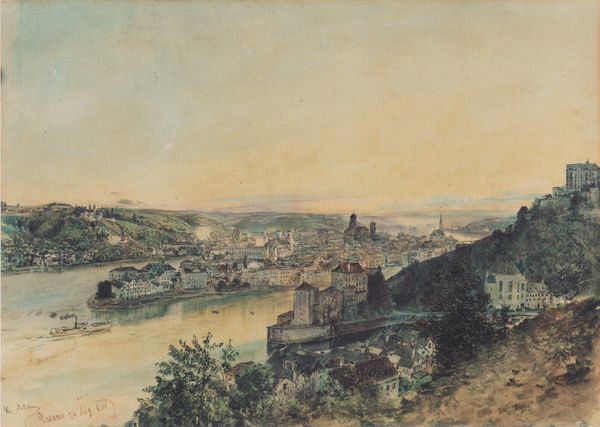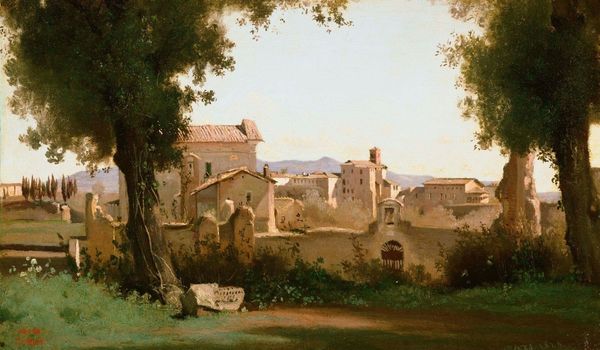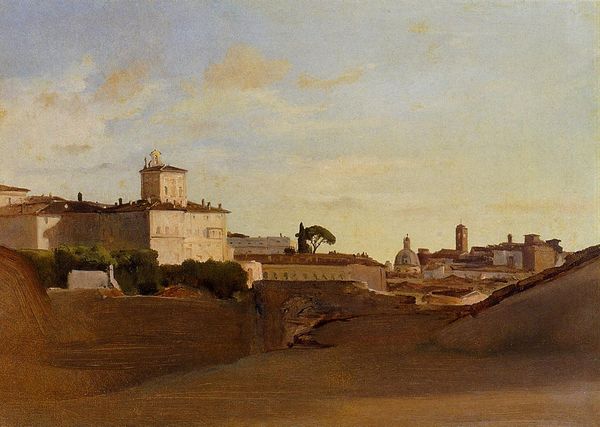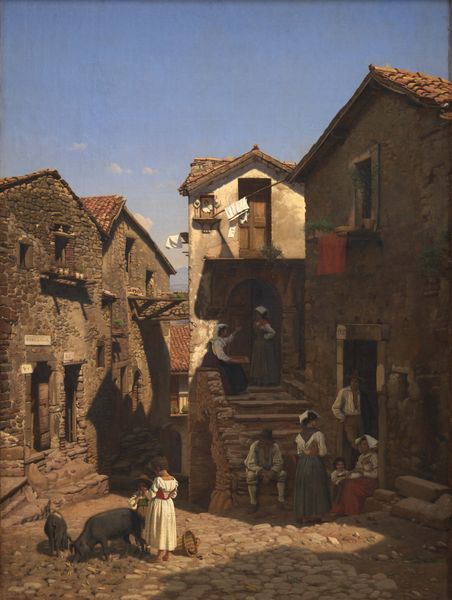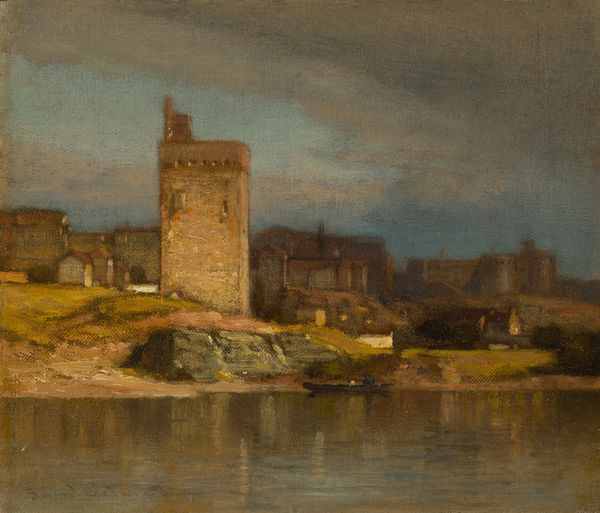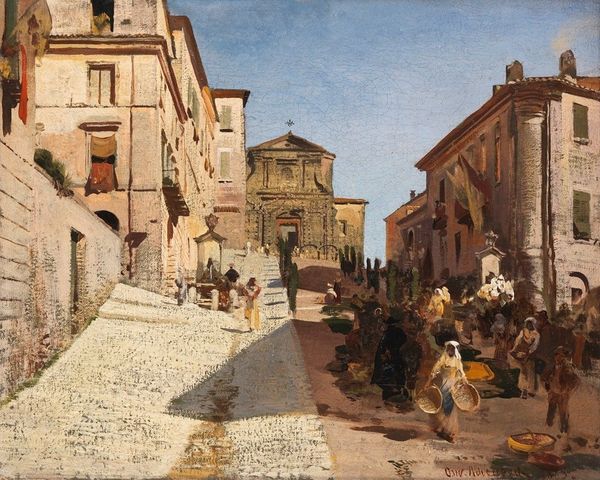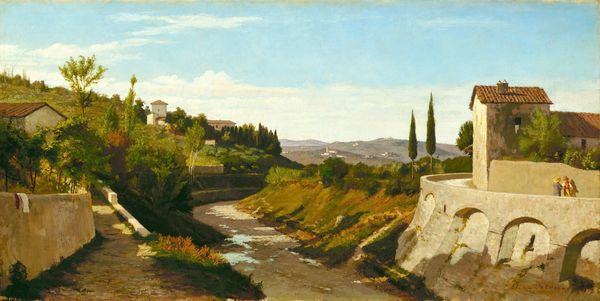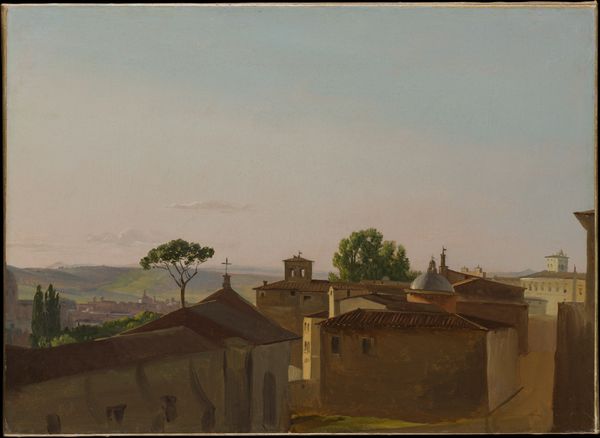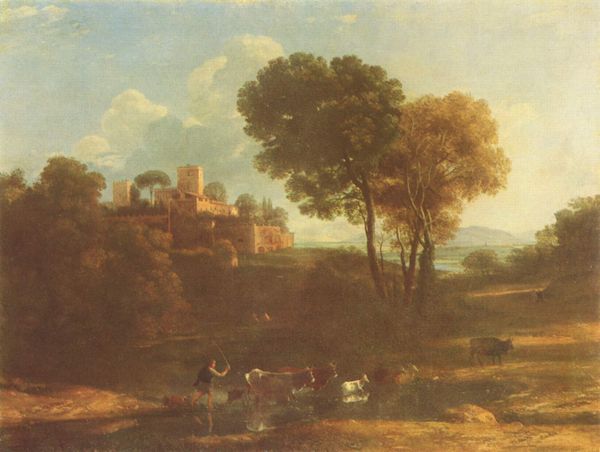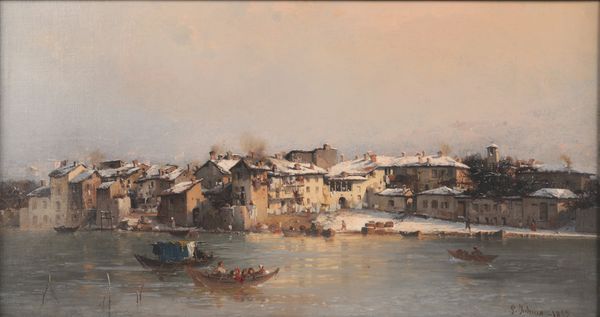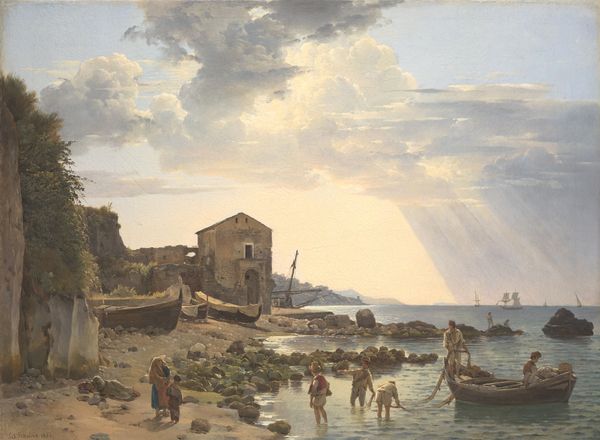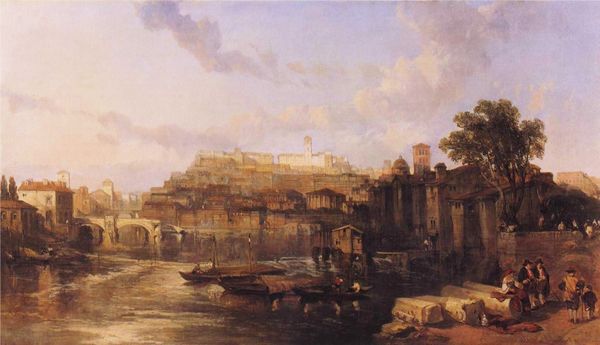
watercolor
#
neoclacissism
#
water colours
#
landscape
#
oil painting
#
watercolor
#
cityscape
#
watercolour illustration
#
genre-painting
#
italian-renaissance
Copyright: Public Domain: Artvee
Curator: Looking at this piece, I am struck by the subtle colour palette. There's a calmness, despite the density of architectural details. Editor: This is "View of the Tiber towards the Aventin Hill in Rome" by Christoffer Wilhelm Eckersberg, created sometime between 1813 and 1815. It is rendered in watercolour. You’re right about the calmness—the muted colours invite a gentle observation. It evokes a specific moment in Rome, one caught between grand history and quotidian life. Curator: Definitely, look at the brushstrokes! Each architectural feature is distinct, methodically crafted with such care to reflect its precise form and materiality. The layered application of watercolour, coupled with precise draftsmanship, exemplifies Neoclassical ideals—revealing the inherent structural integrity of the city itself. Editor: It’s impossible not to consider this image within the socio-political contexts of its time. Eckersberg was part of a generation of artists who travelled to Italy to study antiquity. How complicit was the depiction of working people – and those ruins–in upholding certain power structures and imperial nostalgia? The figures seem almost staged; consider their purpose here and to whom it caters. Curator: I see your point; there's certainly an element of romanticizing daily life that sidesteps a critical engagement with those power dynamics. The clothes they wore, and the labor they certainly had to perform – these speak volumes about socio-economic hierarchies. And yet, what remains is a work demonstrating the labour of careful production, a technique of its time. We are presented with these people's reality, crafted with skill, not ignoring social constructs. Editor: It's a push and pull isn’t it? While recognizing Eckersberg's technical proficiency, we must acknowledge how representations like these can shape understandings of cultures. But that brings us back to materiality! Consider how the availability and expense of watercolors at the time likely influenced who could afford art, and consequently whose stories were most often visualized, influencing wider perception of society. Curator: Absolutely, understanding who has access to creating and consuming art becomes integral to examining it. Thank you for contextualizing these critical angles; now I appreciate the multiple dialogues emerging from what first seemed so serene. Editor: Agreed. Nuance matters in these analyses; I leave today considering its value in continuing to re-evaluate our complex histories.
Comments
No comments
Be the first to comment and join the conversation on the ultimate creative platform.
